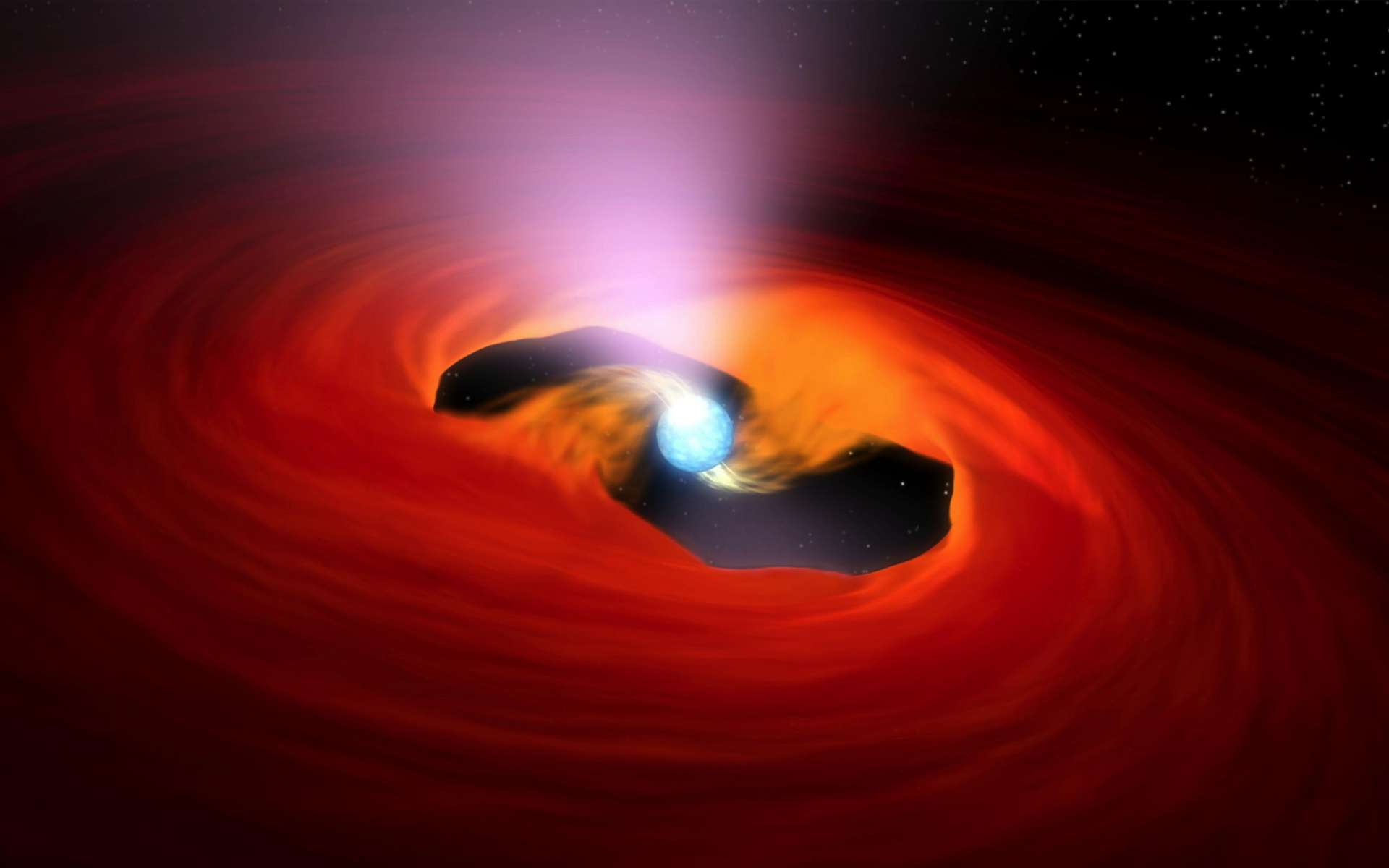Last summer, astronomers witnessed one of the most violent phenomena in our Universe. A neutron star, a pulsar accreting material from its companion star. All this ends with the emission of an X-ray flash.
At the end of last July, the brightness – in the visible – of a mysterious object that astronomers call SAX J1808.4−3658 began to increase. The signal that the scientific community was waiting to point to this neutron star , this pulsar closely watched since its discovery in 1996, no less than seven different instruments. Objective: to capture for the first time the entire process that leads this type of object emitting a flash of X-rays .
Recall that a neutron star, a pulsar , is a dead star that cools irreparably. Except when it forms a couple with another star. A binary system that can survive for billions of years. But neutron stars are so compact and spinning so fast that they tend to suck up the material that makes up their companion … quietly, for months or even years. But, when this matter finally collides with the neutron star, the latter emits a burst of X-rays, the result of a thermonuclear runaway on the surface of the star.
According to theory, a new brilliance in the field of optics precedes two to three days this type of flash in that of X-rays. In the case of SAX J1808.4−3658, astronomers reported, during the 236 he meeting of the American Astronomical Society , that they had to wait twelve long days, twelve days of concentrated activity in the field of optics, before finally observing the first X-ray emissions .
Delay in ignition
“Observing the phenomenon with several telescopes sensitive to different wavelengths has shown us that the initial activity occurred near the companion star, on the outer edges of the accretion disc , comments Adelle Goodwin, astronomer at Monash University (Australia), in a statement . It would then have taken twelve days for the material to spiral up to the neutron star and produce X-rays. ”
Twelve days rather than two or three. The researchers believe that this delay is due to the excess of helium observed in the accretion disc of SAX J1808.4−3658. Usually, these discs are mainly composed of hydrogen . It has 50% helium. However, helium needs higher temperatures to “burn”.
